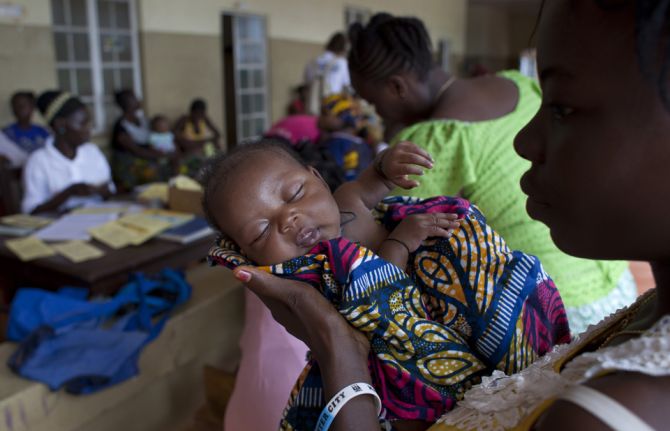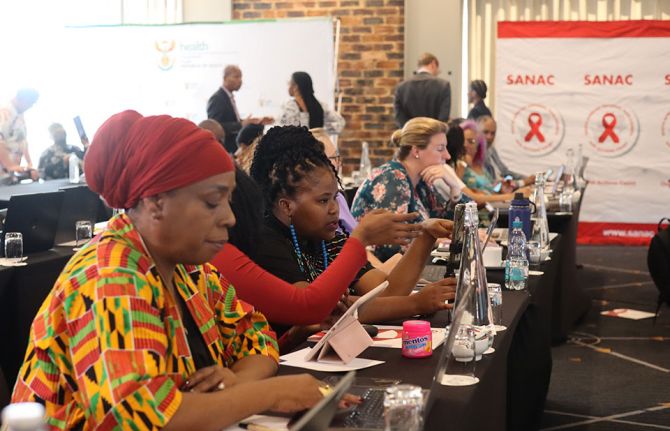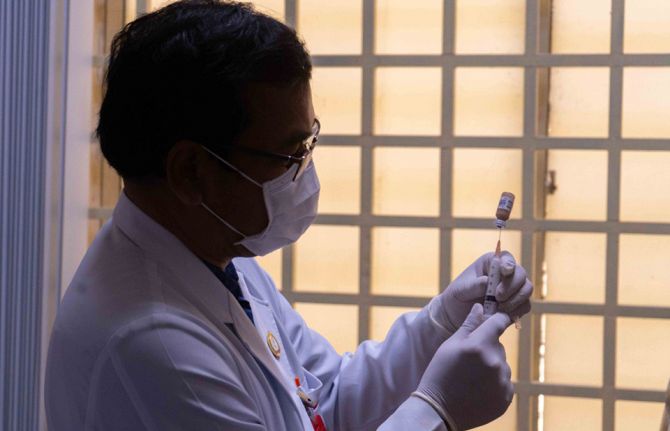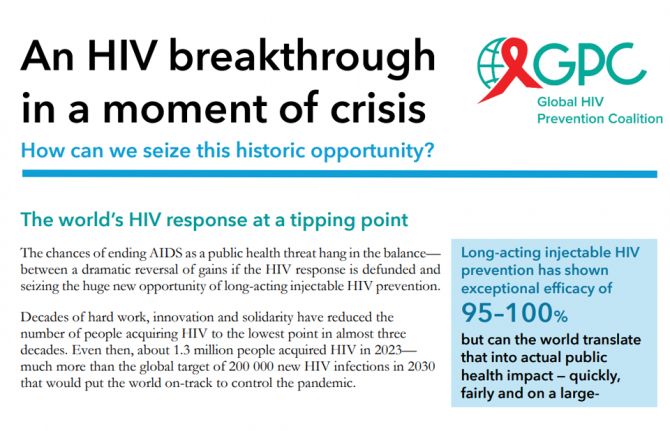

Update
WHO: Two cutting-edge technologies for HIV detection in infants receive WHO prequalification
23 June 2016
23 June 2016 23 June 2016Two innovative technologies for early infant diagnosis of HIV newly prequalified by WHO will allow many more infants to be diagnosed quickly and placed on life-saving treatment.
The products, Alere™ q HIV-1/2 Detect (made by Alere Technologies GmbH) and Xpert® HIV-1 Qual Assay (made by Cepheid AB) can be used to diagnose infants in as little as an hour, instead of sending a sample to a laboratory, which can take weeks or months to return a result.
In 2015, out of more than 1.2 million infants born to HIV positive mothers globally, just over half had access to an infant diagnostic test. That’s one of the reasons why only half of all children estimated to be living with HIV receive the treatment they need. The best way to diagnose HIV infection among infants is to use tests that look for evidence of the virus in the blood, rather than those that look for antibodies or antigens. Until now, those tests required lengthy procedures conducted in a special laboratory setting needing substantial infrastructure and training. These new technologies have simplified these procedures allowing for more infants to be tested, with faster results.
“These tests mark a significant breakthrough in our response to HIV in young children,” said Mike Ward, who leads the regulation unit of WHO’s Essential Medicines and Health Products department. “They are simpler, faster, automated platforms that do not require as much infrastructure as the conventional lab-based systems and can be used at or near the point of care.”
Both products are being studied in some countries with a high burden of HIV to determine how and where they should be used. WHO prequalification gives UN agencies and countries a guarantee of the tests’ quality, safety and performance, and the confidence to buy and use them.
“Using at or near-point of care technologies for early infant diagnosis of HIV has the potential to bring the test closer to the mother-infant pair and ultimately save the lives of children,” said Gottfried Hirnschall, Director of WHO’s Department of HIV.
Both tests use disposable cartridges which are pre-loaded with the chemicals needed to identify HIV in a blood sample. That means they are faster, smaller and easier to manage than other tests that require the type of infrastructure and technical training that is typically only found in major laboratories.
The Xpert® test runs on the same technology that is already being used to diagnose tuberculosis. To test for HIV, it merely requires a change of cartridge, making it a cost-effective platform that can be used to test for multiple diseases. Xpert needs a continuous power supply but very little training or maintenance, and can be done using whole blood or dried blood spots.
The Alere platform can run on a battery for up to eight hours, making it more suitable for use in remote and rural areas where there is no laboratory infrastructure and often few skilled health workers.
The prequalification is the result of an 18-month effort, including a collaboration between WHO, South Africa’s National Health Laboratory Service and the U.S. Centers for Disease Control and Prevention.
“We needed 150 HIV-positive infant specimens, which are thankfully difficult to come by,” said Mercedes Perez Gonzalez, a technical officer in the Department of Essential Medicines and Health Products who coordinated the performance evaluations of the two tests for WHO.
Every year, billions of dollars’ worth of medicines and other health products are purchased by international procurement agencies for distribution in low-income countries. The WHO Prequalification Programme works to ensure these agencies have the choice of a wide range of quality-assured products for bulk purchase at significantly reduced prices. Initially intended as a quality-assurance system for UN agencies, many low-income countries now use WHO’s lists of prequalified products to inform’ their procurement of medical products.
The programme prequalifies an average of 80 medical products a year, including medicines, vaccines, diagnostics and active pharmaceutical ingredients.
Quotes
“These tests mark a significant breakthrough in our response to HIV in young children”



